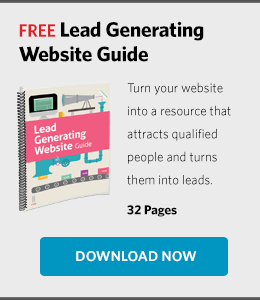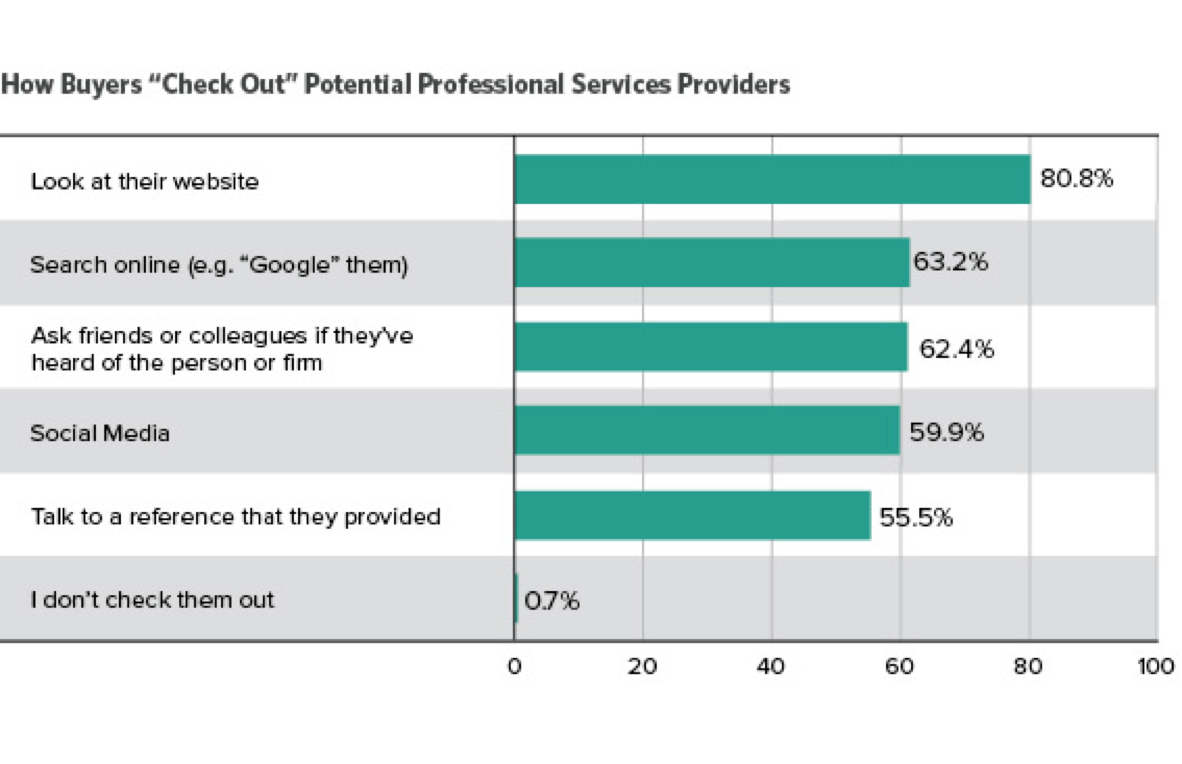You’ve decided that your AEC firm will launch a new website.
So: what comes next?Here are six key questions to get you started.
1) Will your site be mobile-ready?
In practical terms, that means you should consider a responsively designed site, one built to display naturally on any device that you and your clients use. Older sites are often difficult to read or navigate on mobile devices. But whether you’re on a smartphone, a tablet, a laptop, or an HDTV, a responsive site will adapt fluidly and maintain navigation clarity and usability for key elements. This helps ensure that you’re not missing users on their mobile devices, which might be when the view is most timely.
 Relevant research by Box Inc. (a file-sharing technology company) takes a look at how various industries are using technology, finding that construction firms utilized mobile tools more regularly than any of the other industries studied. We know that firms in the AEC market rely heavily on mobile technology to find and share information, so it’s logical that your new website should make the most of this opportunity.
Relevant research by Box Inc. (a file-sharing technology company) takes a look at how various industries are using technology, finding that construction firms utilized mobile tools more regularly than any of the other industries studied. We know that firms in the AEC market rely heavily on mobile technology to find and share information, so it’s logical that your new website should make the most of this opportunity.
2) How regularly will you create content?
Even the most high performance vehicle is useless without the right fuel.
Perhaps you’re already creating educational content, like blog posts, for your audience. Or maybe a content strategy is part of your new website initiative. Either way, it’s important to consider whether your content is effectively tailored to your industry—and what commitments you’re willing to make.
What level of ongoing content development is your team able to support? Ongoing content (like a blog or regular webinars) is powerful, but it takes consistent effort over time. Consider the level of internal or third-party support needed to produce fresh content on a continuous basis. News, work in progress and event categories may be great opportunities to segment relevant posts for your readers, just make sure you have the support in place to update each category weekly.
3) How will your site reflect your brand?
Creating or editing website content for the AEC market is more than just talking the talk. Beyond making sure concepts are described in terms your market relates to, it’s important to take every opportunity to speak about your firm in a differentiated way.
It is vital to capture your firm’s key messages across your new website, whether drawing on external brand visibility research for messaging and positioning or relying on an internal perspective. Your firm’s culture and value should be supported by clear headlines, copy, imagery and design. For some firms this involves tightening up and adding to existing content and selecting the most impactful hero shots from years of photo archives. Other firms take the opportunity to start fresh—developing new content and supporting existing images with new photography and illustrations that can be used on their new website and other collateral. Is your firm ready to support video content or other interactive tools? These features can serve a differentiator for your website, while increasing visit time, enriching your users’ experience and elevating their impression of your firm.
SEE ALSO: AEC Website Design Trends – The New Normal
4) How will your site integrate with social media?
I’ve talked about how a firm’s website is really the hub of its entire online presence, and social media is one important “spoke” to get right. Just as they are doing more of their web browsing on mobile devices, your clients are also spending more and more time on social networks. LinkedIn is the social media juggernaut of the AEC industry, but other networks have their own advantages as well. More than a few of our friends in architecture have nurtured excellent engagement on Pinterest or Facebook. Don’t take this in stride, our research shows that 60% of prospects check out service providers on social media.

Social media is a topic large enough for its own blog post, but in the context of launching a new website, make it easy for users to share your content with their favorite networks You can do this by including social sharing buttons on key content like blog posts. As you publish content, ask yourself whether you are leveraging your website as an anchor for your social media efforts.
5) Is your content management system tested and easy to use?
Open source platforms such as WordPress or Drupal offer a wide range of features, ease of maintenance, and no licensing fees. Ease of use for your team’s content managers is just as critical to the ongoing success of your site as the external design and features that clients see.
One benefit of open-source is a steady stream of updates to guard against emerging bugs and hacking schemes. If a website goes too long without updates, it becomes vulnerable to hacking and automated exploits. Unfortunately, firms often overlook a plan for ongoing installation and testing of these updates. They don’t consider the added effort of a quarterly or yearly update schedule. Incremental (monthly) updates are much more cost-effective, and less likely to introduce errors.
6) How will you build your site?
During a website’s construction phase, we’ve found great value in taking an agile approach to both design and code development for AEC websites. Agile development means the process follows a detailed but flexible calendar and focuses on smaller deliverables that build up to a finished product—as opposed to coming up with a plan, heading off behind the curtains, then delivering a final product. This approach keeps collaboration tight and allows adjustments to be made along the way. In AEC, there are simply too many details and interconnections to risk a go-off-and-build-a-website approach!
Your firm should also consider what happens after your new site launches. With an extensive collection of services and projects, even the most intuitive website management dashboards require some level of training. In addition to formal training, by taking a more collaborative approach to the launch process and maintaining a support window after a website’s launch, we have been able to ease the transition and help managers fine-tune their update strategy and processes.
The Bottom Line
All of the website features and content work with an impactful design to connect with your market. If you’ve made it this far, your firm has recognized the value of a new website. The real question is, have you considered how much your new website can give back to the bottom line?
A properly engineered website can be used in conjunction with an online marketing plan to go beyond the critical supporting roll and actively generate leads.
For the greatest success, approach the launch of your new AEC website with an open mind and a clear vision to get the most out of the process and your new website.
I hope you found this exercise helpful and I’d love to hear your thoughts. Drop me a line in the comments below and let me know what you think. What are the biggest goals for your new AEC website?
Additional Resources
- Our Lead Generating Website Guide details how your firm can generate qualified leads with its website.
- Ensure that your website and content gets found online with Hinge’s SEO Guide for Professional Services.
How Hinge Can Help
Your B2B website should be one of your firm’s greatest assets. Our High Performance Website Program helps firms drive online engagement and leads through valuable content. Hinge can create the right website strategy and design to take your firm to the next level.


